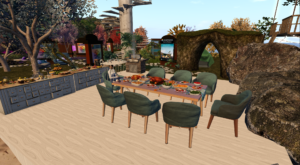In almost the same fashion of using color in film, special effects in movies are […]
Digital Storytelling Look-Back
I already have taken the Digital Storytelling class within the Digital Storytelling course, the evidence […]
Coloring Art in Creative Settings
Colors have always been an important part of storytelling. Colors help with showcasing where a […]
Digital Storytelling Development Checklist
Premise and Purpose Audience and Market Every quarter, there is something added to the storytelling […]
Director’s Staple (Familiarity in a Film)
With the lack of movies that I have seen, I really don’t have a succinct […]
I Will Show You a Transition (Not Really, Just Here to Talk About It)
In film, transitions are the work of moving onto another scene, whether that scene happens […]
Starfield’s Retro-Futuristic Look
Starfield is a game that is a mostly unpopular game amongst the gaming community—not because […]
Welcome to the Hero’s Journey!
It’s wonderful to be welcoming so may new faces on this incredible adventure! This is […]
Storytelling Over the Years (and the Modern Effect)
Storytelling has been a thing that has existed for years and years, and has become […]




